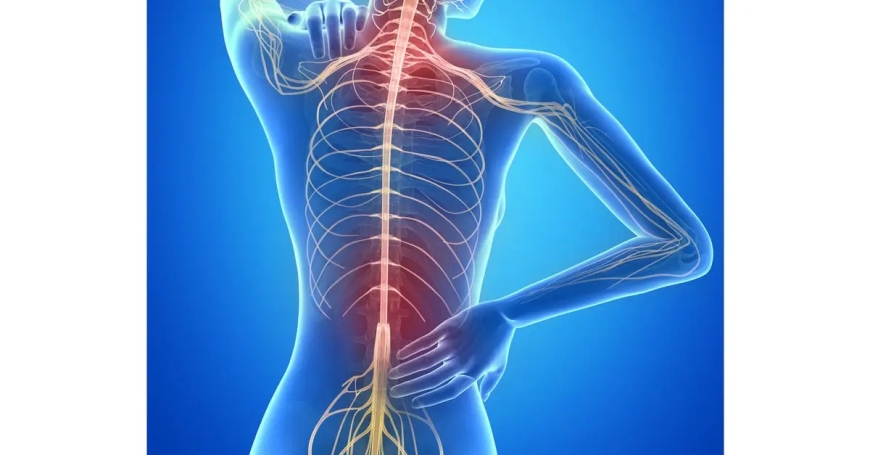The Whole-Person Approach to Chronic Pain Management
The Whole-Person Approach to Chronic Pain Management

Chronic pain is a multifaceted condition that extends beyond physical discomfort, affecting emotional well-being, social interactions, and overall quality of life. Traditional pain management strategies often focus solely on alleviating physical symptoms, frequently overlooking the broader impact chronic pain has on a person’s life. The whole-person approach to chronic pain management seeks to address this gap by considering the entire spectrum of an individual’s health—physical, emotional, mental, and social. This comprehensive strategy aims not just to reduce pain, but to enhance the overall well-being of individuals suffering from chronic pain.
Understanding Chronic Pain: A Multifaceted Challenge
Chronic pain is defined as pain that persists for more than three to six months, often continuing even after the underlying injury or condition has healed. It can arise from various sources, including musculoskeletal issues, neuropathic pain, and conditions such as fibromyalgia or arthritis. However, chronic pain is not merely a physical sensation; it is influenced by emotional, psychological, and social factors that can exacerbate the experience of pain.
-
Emotional Impact: Chronic pain can lead to feelings of frustration, anxiety, and depression. The ongoing discomfort and the limitations it imposes on daily life can create a cycle of negative emotions that, in turn, can amplify the perception of pain.
-
Social and Lifestyle Impact: The limitations imposed by chronic pain often affect an individual’s ability to work, socialize, and engage in physical activities. This can lead to social isolation, decreased quality of life, and even a loss of identity, as patients may no longer be able to participate in activities they once enjoyed.
-
Cognitive and Psychological Factors: Cognitive processes, such as how one thinks about pain, can significantly impact its intensity. Catastrophizing—thinking about pain in the worst possible terms can increase pain severity and reduce the effectiveness of treatment.
Given these complexities, it is clear that a successful chronic pain management plan must address more than just the physical symptoms. The whole-person approach to pain management considers all aspects of a patient’s life, offering a more holistic and effective way to Managing chronic pain.
Core Principles of the Whole-Person Approach
The whole-person approach to chronic pain management is grounded in several key principles that guide the development and implementation of comprehensive care plans.
1. Individualized Care
No two patients experience chronic pain in exactly the same way. Factors such as the type of pain, its source, the patient’s physical health, emotional state, and personal life circumstances all influence the pain experience. Therefore, treatment plans must be individualized, taking into account the unique needs, preferences, and goals of each patient.
-
Personalized Assessments: Comprehensive assessments that include medical history, pain history, psychological evaluations, and lifestyle factors are essential. These assessments help healthcare providers understand the full scope of the patient’s pain and identify the most appropriate treatments.
-
Patient-Centered Goals: Establishing goals that align with the patient’s values and priorities is crucial. Whether the patient’s focus is on reducing pain, improving mobility, or enhancing emotional well-being, the treatment plan should reflect these personal objectives.
2. Multidisciplinary Care
Chronic pain management is most effective when it involves a multidisciplinary team of healthcare professionals. This team may include physicians, physical therapists, psychologists, nutritionists, and social workers, among others. Each member of the team contributes their expertise to create a comprehensive care plan that addresses all aspects of the patient’s health.
-
Integrated Care: By working together, healthcare providers can coordinate treatments and interventions that complement one another. For example, physical therapy can be combined with cognitive-behavioral therapy (CBT) to address both the physical and psychological aspects of pain.
-
Collaborative Decision-Making: The multidisciplinary team should collaborate with the patient in making decisions about their care. This approach ensures that the patient’s voice is heard and that their preferences are respected.
3. Holistic Interventions
The whole-person approach emphasizes the use of holistic interventions that address the physical, emotional, and social aspects of chronic pain. These interventions go beyond traditional medical treatments to include complementary therapies, lifestyle modifications, and psychological support.
-
Physical Interventions: Physical therapies, such as exercise, manual therapy, and acupuncture, can help improve mobility, reduce pain, and enhance physical function. These therapies are often tailored to the patient’s specific condition and level of pain.
-
Emotional and Psychological Support: Psychological therapies, such as CBT, mindfulness-based stress reduction (MBSR), and acceptance and commitment therapy (ACT), can help patients manage the emotional and cognitive aspects of chronic pain. These therapies teach coping strategies, reduce anxiety and depression, and improve pain tolerance.
-
Social and Lifestyle Modifications: Addressing social factors, such as work-related stress, family dynamics, and social isolation, is also important. Lifestyle changes, including diet, sleep hygiene, and stress management techniques, can significantly impact pain levels and overall well-being.
Implementing the Whole-Person Approach: Key Strategies
Implementing a whole-person approach to chronic pain management requires a shift from traditional, symptom-focused care to a more comprehensive, patient-centered model. Here are some key strategies for putting this approach into practice.
1. Comprehensive Pain Assessment
A thorough pain assessment is the foundation of the whole-person approach. This assessment should not only document the physical aspects of pain but also explore its emotional, psychological, and social dimensions.
-
Physical Evaluation: Assess the location, intensity, and nature of the pain, as well as any factors that exacerbate or alleviate it. This evaluation may include imaging studies, physical exams, and functional assessments.
-
Psychological Assessment: Evaluate the patient’s mental health, including any signs of depression, anxiety, or stress. Tools such as pain questionnaires, psychological screenings, and interviews can provide valuable insights.
-
Social and Lifestyle Factors: Consider the patient’s living situation, work environment, social support networks, and lifestyle habits. These factors can influence both the experience of pain and the effectiveness of treatment.
2. Developing a Multidisciplinary Treatment Plan
Based on the comprehensive assessment, the healthcare team can develop a multidisciplinary treatment plan that addresses all aspects of the patient’s health. This plan should include:
-
Medical Interventions: Pain medications, when necessary, should be prescribed with caution, considering the risks and benefits. Non-pharmacological treatments, such as physical therapy and interventional procedures, should also be included.
-
Psychological Therapies: Incorporate psychological therapies that help the patient manage the emotional and cognitive aspects of pain. This may include individual or group therapy sessions.
-
Complementary Therapies: Consider integrating complementary therapies, such as acupuncture, massage, or yoga, which have been shown to support Pain Management.
-
Lifestyle Modifications: Encourage the patient to adopt healthy lifestyle habits that can help reduce pain and improve overall well-being. This may include exercise, diet changes, and stress management techniques.
3. Patient Education and Empowerment
Empowering patients to take an active role in their pain management is a critical component of the whole-person approach. Educating patients about their condition, treatment options, and self-management strategies can enhance their engagement and adherence to the treatment plan.
-
Education Programs: Offer education programs that provide patients with information about chronic pain, its causes, and the various treatment options available. These programs can be delivered through workshops, online resources, or printed materials.
-
Self-Management Tools: Provide patients with tools and resources to help them manage their pain at home. This may include pain diaries, relaxation techniques, and exercise programs tailored to their needs.
-
Support Groups: Encourage participation in support groups, where patients can share their experiences and learn from others who are managing chronic pain. Peer support can be a valuable source of encouragement and motivation.
4. Continuous Monitoring and Adjustment
Chronic pain management is an ongoing process that requires regular monitoring and adjustment of the treatment plan. The patient’s response to treatment should be continually evaluated, and the plan should be modified as needed to ensure optimal outcomes.
-
Regular Follow-Ups: Schedule regular follow-up appointments to assess the patient’s progress and make any necessary adjustments to the treatment plan. These appointments provide an opportunity to address any new or ongoing issues.
-
Patient Feedback: Encourage patients to provide feedback on their treatment, including what is working well and what is not. This feedback can guide adjustments to the plan and improve the patient’s experience.
-
Adapting to Change: Be prepared to adapt the treatment plan as the patient’s condition changes over time. Chronic pain can be unpredictable, and what works today may not be as effective tomorrow. Flexibility and responsiveness are key to successful management.
The Benefits of the Whole-Person Approach
The whole-person approach to chronic pain management offers several significant benefits:
-
Improved Pain Relief: By addressing all aspects of a patient’s health, this approach can lead to more effective pain relief and improved physical function.
-
Enhanced Quality of Life: Beyond pain relief, the whole-person approach aims to improve the overall quality of life, helping patients regain their independence and enjoy a better standard of living.
-
Reduced Reliance on Medications: By incorporating a variety of treatments, including non-pharmacological options, patients may reduce their reliance on medications, particularly opioids, minimizing the risk of side effects and dependency.
-
Greater Patient Satisfaction: Patients who feel that their care is personalized and that their voices are heard are more likely to be satisfied with their treatment and more engaged in their care.
Conclusion
The whole-person approach to chronic pain management represents a paradigm shift in how we understand and treat chronic pain. By considering the physical, emotional, psychological, and social aspects of pain, this approach offers a more comprehensive and effective way to manage chronic pain. Through individualized care, multidisciplinary collaboration, and a focus on holistic interventions, patients can achieve not only pain relief but also an enhanced quality of life
What's Your Reaction?














![Noots Focus Reviews [Truth Exposed 2025]!](https://news.bangboxonline.com/uploads/images/202501/image_430x256_678e3b94881a1.jpg)
![Vivalis Male Enhancement: The Must-Know Ingredients [2025 Update]](https://news.bangboxonline.com/uploads/images/202501/image_430x256_678e3b54e396c.jpg)








